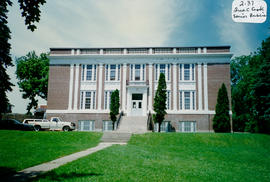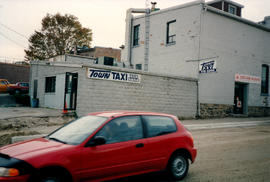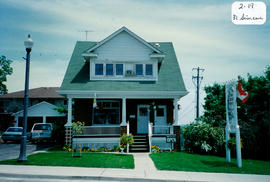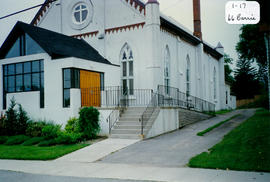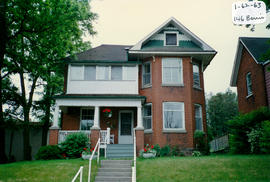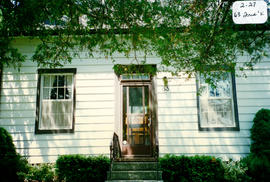- CA BWGPL GJ-HB-2017-04-18-09
- Item
- 1996
Parte de George Jackson fonds
This mid-block building located at 24 Queen St. was built pre-1880 in the Gothic Revival style. The one-storey cottage has an ‘L’-shaped plan with a centre hall. It has an asymmetrical façade, a medium-pitched, gable roof and off-centre gables at the front and side façades. A covered, open porch extends beyond the façade projection to shelter the entrance at street level. It has a shallow, hip roof supported on narrow, wood posts with decorative gingerbread brackets and a plain, wood railing. The centre entrance is set into a simple, rectangular opening. Narrow, double-hung windows with low floor to ceiling heights are set into rectangular openings with plain, wood frames and sills. There is an angular, bay-window projection on the north side that has a truncated, hip roof. The 2/2 windows are original. Decorative, painted, wood half-timbers are found on the exterior walls (at both the front and side gables) and the centre, brick chimney is original. Wood frame construction has stucco cladding and there is a parged, stone foundation. According to the 2000 inventory, the concealed foundation indicates that the house was built prior to the construction of the existing street and town services. It also notes that the house is in good condition with many original details. (1, 3)
Sem título


